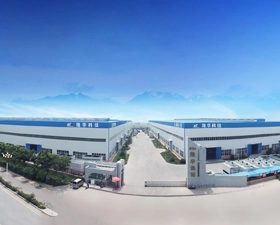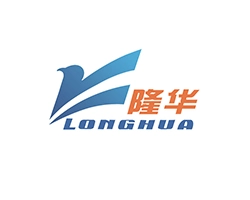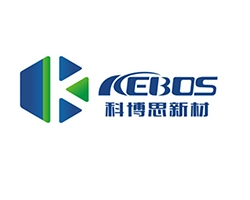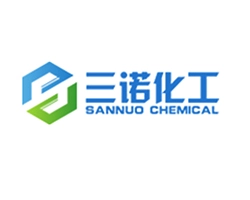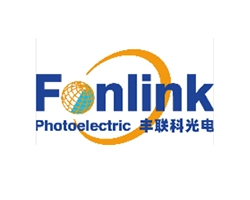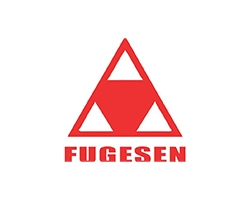In the intricate web of industrial processes, the Air Cooled Heat Exchanger (ACHE) emerges as a key player, providing a resilient solution for thermal energy exchange without the need for water-centric cooling systems. This article navigates the intricacies of air-cooled heat exchangers, exploring their definition, diverse types, operational principles, the role of air coolers, and the compelling advantages that position them as a cornerstone in various industries.
What is An Air-Cooled Heat Exchanger?
An Air Cooled Heat Exchanger (ACHE) is a device designed for the efficient transfer of heat between a fluid and the surrounding air. Unlike traditional heat exchangers that use water or other liquids for cooling, air-cooled heat exchangers rely on the natural convection of air to dissipate heat from the process fluid. These devices find extensive application in various industries, including petrochemical, power generation, and HVAC systems, where water availability is limited or environmental regulations favor air-based cooling solutions. The key components of an air-cooled heat exchanger typically include coils or tubes through which the hot process fluid circulates, and fans or blowers that facilitate the exchange of heat by directing ambient air over the heated surfaces. This design allows for effective heat removal without the need for water resources, making air-cooled heat exchangers a versatile and sustainable choice in diverse industrial settings.

Types of Air-Cooled Heat Exchangers
There are several types of air-cooled heat exchangers, each designed for specific applications and operating conditions. The main types include:
This is the most common type of air-cooled heat exchanger. It consists of a bundle of tubes with fins attached to the outside. The fins increase the surface area for heat exchange, enhancing efficiency.
Plate-fin heat exchangers use a series of flat, finned plates to increase the surface area for heat exchange. The plates are stacked to form compact, lightweight units with high heat transfer rates. These are commonly used in aircraft and some industrial applications.
Similar to traditional shell and tube heat exchangers, these systems include features such as extended surfaces or fins to improve heat dissipation to the surrounding air.
Dry cooling towers are large heat exchangers used in power plants and industrial facilities. They use fans to move air over a large surface area of tubes to cool hot water or other fluids. Dry cooling towers are an alternative to wet cooling towers, where water is used for cooling.
Hybrid coolers combine elements of both air and water cooling. They use air to cool the working fluid in the primary loop, and then a secondary water loop is used to reject heat to the environment. This allows for efficient heat exchange while minimizing water usage.
Fluid coolers, also known as closed-circuit coolers or dry coolers, use air to cool a working fluid circulating within a closed loop. These are commonly used in HVAC (Heating, Ventilation, and Air Conditioning) systems and industrial processes.
Air-cooled condensers are specifically designed for condensing vapors back into liquid form. They are commonly used in refrigeration systems and air conditioning units where water availability is limited or impractical.
The choice of the air-cooled heat exchanger type depends on factors such as the nature of the fluid being cooled, temperature requirements, space constraints, and environmental considerations. Each type has its advantages and limitations, and the selection is based on the specific needs of the application.
The Key Components Of An Air Cooled Heat Exchanger
An Air Cooled Heat Exchanger (ACHE) is a complex system composed of several key components that work together to facilitate efficient heat exchange between a fluid and the surrounding air. Understanding these components is crucial for comprehending the functionality and effectiveness of an air-cooled heat exchanger. The working principle of an air-cooled heat exchanger involves the following key components:
The primary conduits through which the hot process fluid flows. Coils or tubes are designed to maximize surface area contact with the fluid, promoting effective heat transfer.
Adjacent to the coils or tubes, these components enhance the surface area exposed to the airflow, optimizing the heat dissipation process. Fins or louvers are instrumental in increasing the efficiency of heat transfer.
Positioned strategically to direct ambient air over the coils or tubes. The fan or blower creates airflow, promoting the convective heat exchange by facilitating the movement of air across the heated surfaces.
Powers the fan or blower to maintain a consistent and controlled flow of air. The motor plays a crucial role in regulating the cooling process and ensuring the efficiency of heat dissipation.
Provides structural support and houses the coils, fins, fans, and other internal components. The frame or casing is designed to withstand environmental conditions and maintain the integrity of the heat exchanger.
Serve as entry and exit points for the process fluid. The inlet port allows the hot fluid to enter the coils, where it undergoes heat exchange, and the outlet port releases the cooled fluid back into the system.
These components, such as dampers or louvers, are employed to regulate the amount of air passing through the heat exchanger. Controlling airflow is essential for optimizing heat transfer and ensuring the system operates at peak efficiency.
The foundation or structural framework that holds the entire heat exchanger system in place. The support structure is designed to withstand external forces and maintain stability during operation.
Understanding how these components interact within an air-cooled heat exchanger provides insights into the system's functionality. The synergy of coils, fins, fans, motors, and other elements ensures effective heat dissipation, making air-cooled heat exchangers a reliable and versatile solution for various industrial applications.
What Is The Main Advantage Of An Air-Cooled Heat Exchanger?
The main advantage of an air-cooled heat exchanger is its independence from water sources. Unlike water-cooled systems, which require a constant water supply for cooling, air-cooled heat exchangers use ambient air to dissipate heat. This makes them particularly suitable for installations in locations where water is scarce, expensive, or environmentally undesirable.
Key advantages of air-cooled heat exchangers include:
Water Independence: Air-cooled heat exchangers do not rely on water for cooling, eliminating the need for a continuous water supply. This is especially advantageous in areas with water shortages or where water conservation is a priority.
Ease of Installation: Air-cooled heat exchangers are often easier to install and maintain compared to water-cooled systems. They do not require complex plumbing systems or water treatment facilities.
Outdoor Installation: These heat exchangers are well-suited for outdoor installations, where exposure to the elements is a consideration. They are resistant to freezing in cold climates, and there is no risk of water leakage.
Lower Operating Costs: Since air-cooled systems don't use water, there are no associated water treatment costs, and there's no need for pumps to circulate water. This can result in lower operating costs over the life of the heat exchanger.
Reduced Environmental Impact: In certain applications, air-cooled heat exchangers may be preferred from an environmental standpoint because they eliminate the discharge of heated water back into natural water bodies, which can have ecological implications.
Flexibility in Location: Air-cooled heat exchangers provide flexibility in choosing the location of industrial facilities since they are not constrained by the need for proximity to water sources.
While air-cooled heat exchangers offer these advantages, it's important to note that they may have lower heat transfer efficiency compared to water-cooled systems, and their performance can be influenced by ambient air temperature and humidity. The choice between air-cooled and water-cooled systems depends on the specific requirements and conditions of the industrial process or application.


 EN
EN
 jp
jp  ko
ko  fr
fr  de
de  es
es  it
it  ru
ru  pt
pt  ar
ar  tr
tr 